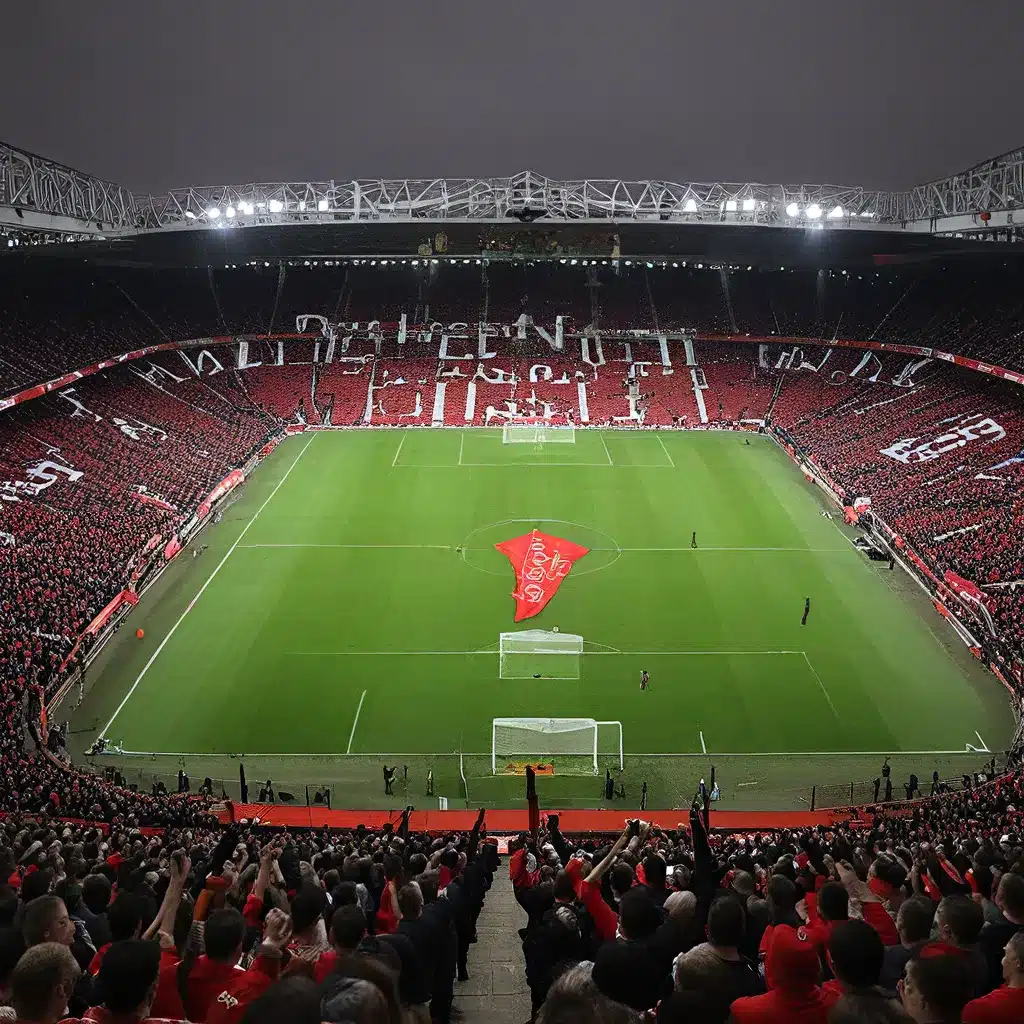
The Old Trafford stadium, home to the legendary Manchester United football club, is a true icon of the sport, standing tall as a beacon of excellence, tradition, and unparalleled achievements. This revered arena, nestled in the heart of Manchester, England, has witnessed the rise and fall of empires, the birth of legends, and the relentless pursuit of glory that has captivated fans across the globe for decades.
The Majestic Origins of Old Trafford
The story of Old Trafford begins in the late 19th century, when Manchester United, then known as Newton Heath LYR Football Club, struggled to find a suitable home ground. It was in 1909 that the club, now rebranded as Manchester United, acquired a plot of land in the Trafford district of Manchester, and the construction of the iconic stadium commenced.
Designed by renowned architect Archibald Leitch, Old Trafford was envisioned as a grand, multi-purpose sports facility that would serve as the club’s permanent home. The stadium’s distinctive red-brick exterior, paired with its striking Art Nouveau-influenced architectural style, immediately set it apart from the more rudimentary grounds of the era.
The inaugural match at Old Trafford took place on February 19, 1910, as Manchester United welcomed Liverpool in a league encounter. Despite the home team’s 4-3 defeat, the occasion marked the beginning of a love affair between the stadium and its devoted supporters, who would come to revere it as the “Theatre of Dreams.”
The Trials and Triumphs of Old Trafford
Old Trafford’s journey has not been without its challenges. During the Second World War, the stadium suffered significant damage from German bombing raids, with the Main Stand being completely destroyed. Undeterred, the club and its loyal fans rallied together, and the ground was meticulously restored, emerging from the ashes more magnificent than ever.
The 1940s and 1950s saw Manchester United cement their status as one of the most formidable forces in English football, with iconic players such as Sir Bobby Charlton and George Best gracing the hallowed turf of Old Trafford. The club’s crowning moment came in 1968, when they became the first English team to win the prestigious European Cup**, defeating Benfica in the final at Wembley Stadium.
The 1970s and 1980s were a period of relative struggle for the club, but the appointment of Sir Alex Ferguson as manager in 1986 ushered in a new era of dominance. Under his stewardship, Old Trafford became a fortress, with the team winning a staggering 13 Premier League titles, 5 FA Cups, and 2 UEFA Champions League titles between 1993 and 2013.
Embracing Modernity and Expansion
As the game of football evolved, so too did Old Trafford. In the 1990s, the stadium underwent a major renovation, transforming it into a modern, all-seater arena capable of hosting over 75,000 spectators. The iconic Sir Alex Ferguson Stand, completed in 1996, stands as a testament to the manager’s enduring legacy and the club’s unwavering commitment to progress.
The 21st century has seen Old Trafford continue to adapt and evolve. In 2006, the stadium’s capacity was further expanded to just shy of 75,000, making it one of the largest football grounds in the United Kingdom. The introduction of state-of-the-art facilities, including the Manchester United Museum and Tour Centre, has enhanced the matchday experience for fans, offering them a deeper connection to the club’s rich history and traditions.
The Allure of Old Trafford
Beyond its impressive physical attributes, Old Trafford has become a mecca for football enthusiasts worldwide, drawing in legions of devoted Manchester United supporters who come to bask in the stadium’s unparalleled atmosphere and legacy. The thunderous roar of the crowd, the awe-inspiring Stretford End, and the electric energy that permeates the air on match days have all contributed to the stadium’s legendary status.
For many fans, a pilgrimage to Old Trafford is a rite of passage, a chance to witness the club’s illustrious history unfold before their eyes and to connect with the rich tapestry of Manchester United’s identity. The stadium’s iconic banners, the panoramic views from the upper tiers, and the sense of camaraderie shared among supporters all combine to create an unforgettable experience that transcends the boundaries of the sport itself.
The Future of the “Theatre of Dreams”
As Manchester United continues to navigate the ever-evolving landscape of modern football, the future of Old Trafford remains a topic of keen interest and speculation. Rumors of potential renovations, expansions, or even the construction of a brand-new stadium have circulated in recent years, but the club’s leadership has remained committed to preserving the stadium’s enduring legacy and iconic status.
Regardless of what the future may hold, one thing is certain: Old Trafford will forever hold a special place in the hearts of Manchester United fans, who will continue to flock to its hallowed grounds, eager to witness the next chapter in the club’s illustrious history. For as long as the roar of the crowd echoes through its stands and the dreams of glory are born on its pitch, the “Theatre of Dreams” will remain a beacon of inspiration, a testament to the power of sport to captivate, unite, and inspire generations to come.
Explore the rich history and captivating allure of Old Trafford and other iconic stadiums around the world at Old Stadium Journey, your ultimate destination for immersive stadium experiences.

